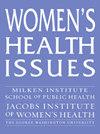“Women's Lives Are on the Line, and Our Hands Are Tied”: How Television Is Reckoning With a Post-Dobbs America
IF 2.5
2区 医学
Q2 PUBLIC, ENVIRONMENTAL & OCCUPATIONAL HEALTH
引用次数: 0
Abstract
Background
Since the 2022 Dobbs v. Jackson Women’s Health Organization Supreme Court decision revoked federal protection for abortion rights, many states have restricted abortion. Although news media covers this shifting landscape through reporting, this article documents how entertainment content is responding to this new reality in its storytelling.
Methods
The sample is from a public database of abortion plotlines on American television (abortiononscreen.org). I separated the sample of 150 plotlines into two groups: plotlines that filmed and/or aired pre-Dobbs (January 2020–August 2022) and those that aired post-Dobbs (September 2022–December 2023). Coding occurred in Microsoft Excel.
Results
Post-Dobbs, there was an increase in the proportion of abortion plotlines that depicted procedural abortions compared with pre-Dobbs, but no change in the consistently low proportion of medication abortion depictions. The post-Dobbs sample included a 10% increase in teen characters compared with pre-Dobbs. Pre-Dobbs, the vast majority of plotlines (77%) did not portray any barriers to abortion care. Post-Dobbs, 33% depicted barriers. The most common reason for abortion seeking in both samples was age (11%). Pre-Dobbs, the next most common was a mis-timed pregnancy (10%). Post-Dobbs, the next most common was health concerns (11%).
Conclusions
Since Dobbs, more television plotlines are portraying obstacles to abortion care, yet they continue to tell stories of white, non-parenting teenagers who make up a small percentage of real abortion patients. Plotlines overrepresent procedural abortion over the more common medication abortion. Depictions of health-related reasons for abortion seeking obscure more commonly provided reasons for abortions, such as mistimed pregnancies, caregiving responsibilities, and financial concerns. Considering the low levels of abortion knowledge nationwide, understanding what (mis)information audiences encounter onscreen is increasingly important.
"妇女命悬一线,我们束手无策":电视如何应对后多布斯时代的美国。
背景:自 2022 年多布斯诉杰克逊妇女健康组织案(Dobbs v. Jackson Women's Health Organization)最高法院判决取消对堕胎权的联邦保护以来,许多州都限制堕胎。虽然新闻媒体通过报道报道了这一变化,但本文记录了娱乐内容在讲述故事时如何应对这一新的现实:样本来自美国电视中堕胎情节的公共数据库(abortiononscreen.org)。我将样本中的 150 个情节分为两组:在多布斯案之前(2020 年 1 月至 2022 年 8 月)拍摄和/或播出的情节,以及在多布斯案之后(2022 年 9 月至 2023 年 12 月)播出的情节。编码工作在 Microsoft Excel 中进行:与《多布斯法案》之前相比,《多布斯法案》之后对程序性流产的描述有所增加,但对药物流产的描述一直较少的情况没有改变。与《多布斯法案》颁布前相比,《多布斯法案》颁布后的样本中青少年角色增加了 10%。在《多布斯》之前,绝大多数情节(77%)都没有描述堕胎护理的任何障碍。多布斯事件后,33%的情节描写了堕胎障碍。在这两个样本中,寻求堕胎的最常见原因是年龄(11%)。多布斯案前,其次最常见的原因是怀孕时间错误(10%)。在《多布斯》之后,其次最常见的原因是健康问题(11%):结论:自《多布斯》以来,越来越多的电视情节描绘了堕胎护理的障碍,但它们仍然讲述的是白人、未为人父母的青少年的故事,而这些青少年在真正的堕胎患者中只占很小的比例。与更常见的药物流产相比,剧情中更多地表现了程序性流产。对寻求堕胎的健康相关原因的描述掩盖了更常见的堕胎原因,如怀孕时机不当、照顾责任和经济问题。考虑到全国堕胎知识水平较低,了解观众在银幕上遇到的(错误)信息变得越来越重要。
本文章由计算机程序翻译,如有差异,请以英文原文为准。
求助全文
约1分钟内获得全文
求助全文
来源期刊

Womens Health Issues
Multiple-
CiteScore
4.50
自引率
6.20%
发文量
97
审稿时长
32 days
期刊介绍:
Women"s Health Issues (WHI) is a peer-reviewed, bimonthly, multidisciplinary journal that publishes research and review manuscripts related to women"s health care and policy. As the official journal of the Jacobs Institute of Women"s Health, it is dedicated to improving the health and health care of all women throughout the lifespan and in diverse communities. The journal seeks to inform health services researchers, health care and public health professionals, social scientists, policymakers, and others concerned with women"s health.
 求助内容:
求助内容: 应助结果提醒方式:
应助结果提醒方式:


